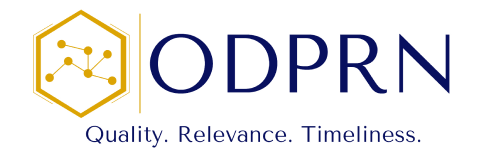What approach was used to assess the impact of the Drug Class Review final report and recommendations on health equity?
The ODPRN incorporated health equity considerations throughout the review process, wherever possible, and used the Ministry of Health and Long-Term Care decision support tool: Health Equity Impact Assessment.
How were drug classes chosen for review by the ODPRN?
Drug class review topics were identified, selected and prioritized by a panel consisting of ODPRN researchers, drug policy makers from the Ontario Public Drug Programs and a representative from the Committee to Evaluate Drugs (an independent expert advisory committee on drug-related issues) based on four criteria: timeliness, feasibility, relevance and potential value (e.g., clinical impact, economic impact, quality of life impact, educational impact, policy changes). External stakeholders took part in the process by submitting an idea for a drug class review form.
As part of the Evidence Package submission, could unpublished studies or papers be submitted?
Any evidence relevant to the review, including clinical trials, follow-up studies and evidence from disease registries, could be submitted as part of the Evidence Package submission. However, the contents of all submissions are made available to the public upon request and therefore materials considered confidential could not be used by the ODPRN. However, the ODPRN did consider scientific materials in confidence for a limited period of time if awaiting academic publication (i.e., if a paper had been accepted for publication and was awaiting public release). Please see our Privacy Policy for more information.
How did you avoid duplication of topic selection with other agencies, such as CADTH, when undertaking a review?
When considering a drug class to review, the ODPRN took into account whether another review was underway or had been recently completed by another group. If the findings of the review were comprehensive and served the purposes of Ontario’s policy-makers, the ODPRN did not undertake a review to avoid duplication of efforts.
One way in which we identified projects underway was through PROSPERO. The Systematic Review team also registered each ODPRN review with PROSPERO, which contains records of prospectively registered systematic reviews.
Why were the timelines for comments from stakeholders on the Comprehensive Research Plan and the Draft Review/Recommendations so short?
One of the objectives of the ODPRN Drug Class Reviews was to produce timely, high-quality reports that are relevant to policy makers. This means that throughout our entire review process, we needed to adhere to short timelines. Stakeholders were able to provide comments on the Comprehensive Research Plan for two weeks. For the Draft Report and Recommendations, stakeholders were able to provide feedback for four weeks. However, the ODPRN maintained a list of upcoming drug class reviews on the website, along with anticipated timelines for the launch of each review so that stakeholders were aware of future reviews.
Are the recommendations from the Drug Class Reviews binding?
No, the recommendations are not binding. The ODPRN is an independent research organization with a mandate to provide recommendations to the Ontario Public Drug Programs (OPDP) at the completion of each Drug Class Review. It remains at the discretion of the OPDP as to whether these recommendations will be implemented.
Are treatment guidelines relevant to the drug class review incorporated into the review process?
Absolutely! The Environmental Scan group searched for treatment guidelines, both national and international, relevant to the Drug Class under review.
How could patients become involved in the ODPRN Drug Class Review process?
Patients were important stakeholders to the entire review process. Patients could suggest drug class review ideas, participate in one-on-one interviews and provide comments on the Comprehensive Research Plan as well as the Draft Review and Recommendations. Patient advocacy groups were also invited to participate in the two forums that aimed to obtain feedback on the Comprehensive Research Plan and the Draft Review and Recommendations. There was also one patient representative for each drug class who was a member of the Research Team.
What was the role of industry in the ODPRN Drug Class Review process?
We encouraged the manufacturers of the drugs under each Drug Class Review to become active participants in the review process. Industry could submit written comments on the Comprehensive Research Plan as well as the draft review/recommendations. Any evidence relevant to the review, including clinical trials, follow-up studies and evidence from disease registries, could be submitted as part of the Evidence Submission Packages. In addition, industry was invited to participate in the two forums aimed to obtain feedback on the Comprehensive Research Plan and the Draft Review and Recommendations. Finally, industry could suggest drug class review ideas.
What is the difference between the ODPRN Drug Class Reviews and other therapeutic reviews?
The ODPRN Formulary Modernization Initiative was a comprehensive approach to drug class reviews that included systematic reviews of the literature, environmental scans, qualitative analyses of perspectives of patients, prescribers and pharmacists, as well as real-world, population-based analyses of drug utilization trends, safety signals and cost implications of potential reimbursement decisions. Recommendations based on the findings of the review were made to the Ontario Public Drug Programs (OPDP) of the Ontario Ministry of Health and Long-Term Care.
